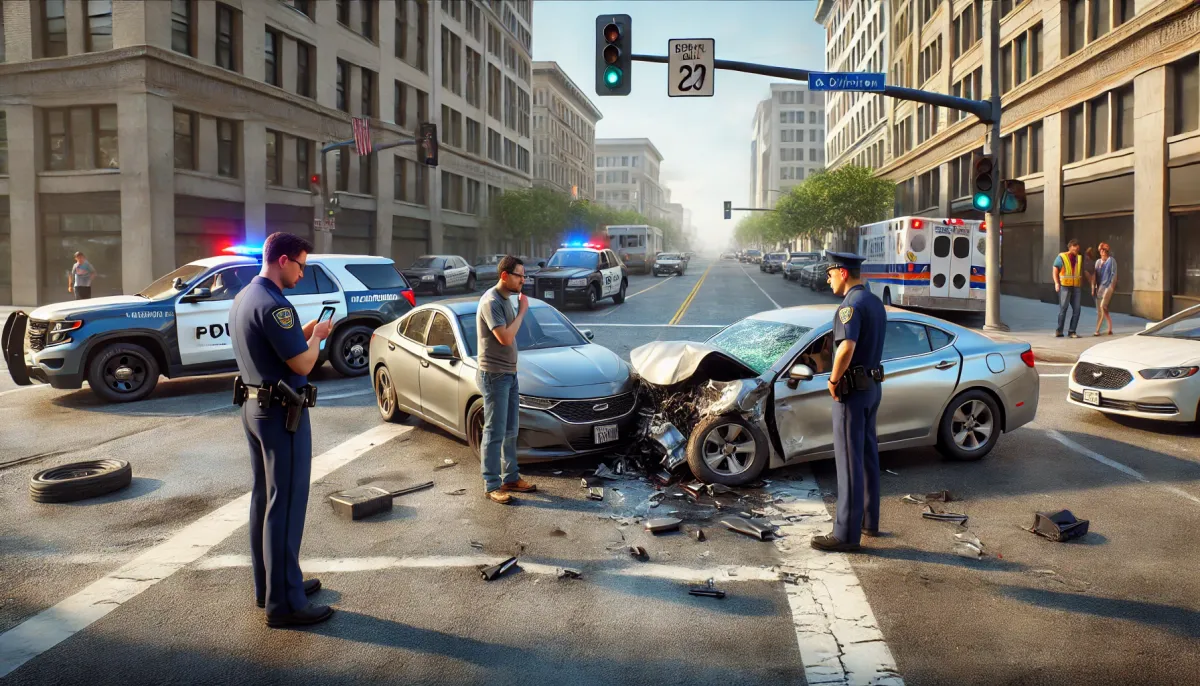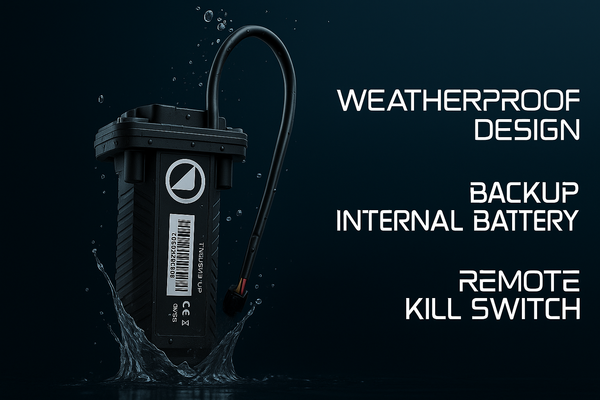How Turo Hosts Should Handle Accidents: A Step-by-Step Guide
Handling accidents on Turo requires a clear plan. This guide outlines the essential steps, from ensuring safety to dealing with insurance claims and repairs.

Introduction: Why a Structured Approach Matters
Being a Turo host involves responsibility, and one of the most challenging situations you might face is handling an accident involving one of your vehicles. Accidents can happen at any time, and when they do, it’s crucial to respond in an organized, timely, and professional manner. Not only does this ensure the safety of everyone involved, but it also minimizes the financial risks, preserves the vehicle’s value, and helps maintain a positive relationship with your guest.
Accidents can be unpredictable, but knowing how to handle them step-by-step can reduce potential damage, save time, and prevent you from making costly mistakes. The goal is to minimize stress, simplify the claims process, and ensure your reputation as a reliable host is maintained.
A structured approach has numerous benefits for hosts:
- Protects Your Investment: Accidents can result in significant damage, and knowing how to respond can help prevent additional repair costs and reduce the risk of liability.
- Maintains Guest Confidence: When you handle accidents professionally, your guests will feel reassured. This will not only help maintain positive reviews but also encourage future bookings.
- Simplifies Claims: Having a systematic approach ensures you collect all necessary information and submit timely claims, reducing the risk of disputes or denials from insurance providers.
With the right steps in place, you can face any accident situation with confidence. Let’s dive into each step and break down how you should approach an accident as a Turo host.
Step 1: Ensure Safety
Check for Injuries
The safety of everyone involved in the accident should be your top priority. Before worrying about the car or insurance, check for injuries. Ensure that all parties—both guests and others involved in the accident—are safe. If anyone is injured, immediately call emergency services to ensure they receive the necessary medical attention.
In the case of a minor accident, you might think that injuries are not a concern, but it’s always best to err on the side of caution. Even seemingly small injuries can lead to larger issues later on, especially if they’re not addressed promptly.
If the situation allows, ask your guest and any other involved parties if they’re feeling okay. If anyone expresses pain or discomfort, call for medical help right away.
Secure the Scene
Once you’ve confirmed that everyone is safe, the next step is to secure the accident scene. You want to make sure the situation doesn’t worsen by another vehicle coming into the area unexpectedly. If possible, move the vehicle out of traffic to avoid any further accidents or injury.
Turn on your hazard lights to alert other drivers and place any cones or warning signs around the scene to increase visibility. If you’re unable to move the vehicle, try to keep it in a safe position and wait for help to arrive.
In some areas, if the car is not drivable, it might be necessary to leave it where it is until the authorities or tow trucks arrive. Ensure you stay calm and manage the situation professionally, as this will set the tone for the rest of the process.
Step 2: Gather Information
Take Photos of Damage
Now that everyone is safe, it's time to start documenting the incident. Photography is one of the most important steps in handling an accident. Photos are critical for insurance claims, disputes, and providing evidence in case there’s any disagreement about the accident’s details.
Take pictures of all vehicles involved, including damage to your Turo car and any other vehicles. Capture different angles to ensure you have a clear representation of the damage. Focus on taking clear, high-resolution images of the license plates, the surrounding environment, and any debris that could be important for the claim process.
The more thorough your photographic evidence, the easier it will be for both Turo and your insurance provider to process the claim.
Record Driver Details
You’ll also need to gather key information about the individuals involved. Start with the guest renting the vehicle. Collect their full name, contact information, driver’s license details, and insurance information. This is essential for filing claims with your insurance provider or Turo’s platform.
If the other driver is involved, be sure to get their contact and insurance details as well. Ensure all the information is legible and correct. This helps prevent any delays in the claims process.
Note Environmental Factors
Sometimes, weather and road conditions can play a role in determining liability or affecting the severity of the accident. If it was raining, snowing, or the road was icy, it’s important to document these environmental factors as they might influence the insurance claim process.
Take note of the conditions and include them in your incident report or claim submission. It’s important to provide as much context as possible.
Step 3: Contact the Authorities (If Needed)
File a Police Report
For any serious accident involving significant damage or injuries, you will need to file a police report. Having an official record of the accident is crucial for the insurance claim process, and the police report often includes important details that can clarify the circumstances.
If the accident occurred in an area with heavy traffic, it may be necessary to involve the authorities sooner to manage the situation and prevent further incidents. A police report is essential for the documentation and ensures that there’s an unbiased third-party record of the event.
Request a Case Number
Once the police report is filed, request a case number. This will allow you to refer to the incident quickly and easily when communicating with insurance providers or Turo. Keep the case number handy for follow-ups.
Step 4: Inform Turo Promptly
Submit a Claim Through Turo
After gathering all the necessary information, the next step is to inform Turo. Reporting the incident to Turo immediately ensures that the platform can begin its process for evaluating the situation and assisting with insurance coverage.
Follow Turo’s claim process by uploading the photos, incident details, and documentation you’ve gathered. This allows them to assess the damages and provide guidance on what to do next. Turo may require you to submit additional information depending on the situation.
Clarify Coverage
Before proceeding further, make sure to understand your Turo protection plan. Every Turo host has different levels of coverage, and knowing your specific terms can help you avoid surprises. Review the details of your protection plan, including coverage limits, deductibles, and exclusions.
If there’s any uncertainty about what’s covered or what the next steps are, don’t hesitate to contact Turo’s support team for clarification.
Provide Necessary Documents
Be prepared to submit the police report, repair estimates, and any other relevant documents that might be requested. Keeping these documents organized and available will make the claims process much smoother.
Step 5: Consider the Guest’s Insurance
Evaluate Cost Benefits
In some cases, the guest’s insurance might offer better coverage for the accident. If the guest’s insurance is comprehensive, it might cover the damages more quickly or in a way that minimizes your out-of-pocket expenses. It could be more efficient to file a claim with the guest's insurance rather than rely solely on Turo’s coverage.
Keep Communication Open
When dealing with the guest’s insurance, it’s essential to keep the lines of communication open. Discuss any costs, including what the guest’s insurance may or may not cover. Transparency here can help prevent confusion and ensure a smooth settlement.
Step 6: Obtain a Repair Estimate
Choose a Reputable Shop
Once the claim is filed and you have received authorization from Turo or your insurance provider, take the vehicle to a reputable repair shop. Make sure the shop is capable of handling the repairs needed for your vehicle and is experienced with insurance claims.
Document Everything
Keep records of every step of the repair process. Document the condition of the vehicle before repairs begin, and take photos of the vehicle after repairs are completed. This ensures that you have a clear record of the damage and the repairs made for future reference or in case of any disputes.
Submit Supplementals (If Needed)
Sometimes repairs go beyond initial estimates. If this happens, the repair shop may need to submit additional documentation or get approval for more extensive repairs. Be prepared for this possibility and stay in contact with the insurance provider to ensure all costs are covered.
Step 7: Finalize Repairs and Follow-Up
Verify the Work
Before returning the car to your Turo listings, thoroughly inspect the repairs. Ensure that the car is in safe, operational condition, and that the work meets your satisfaction. If any issues remain, address them with the repair shop before the car is put back into service.
Update Turo and Insurance
Once the repairs are complete and you’re satisfied with the vehicle’s condition, update Turo and your insurance provider with the final information. This might include submitting any additional paperwork for loss-of-use reimbursement or adjusting coverage for the repairs.
Maintain Records
Maintain a complete record of all correspondence, receipts, estimates, and repair details. These documents will serve as proof in case of any future claims or disputes. Having organized records ensures you’re always prepared.
Conclusion: Handling Accidents Calmly and Systematically
Accidents are inevitable, but by approaching them with a structured, calm, and efficient method, you can protect your investment, maintain your reputation as a reliable host, and minimize costs. Documenting damage, understanding your coverage, and maintaining open communication with Turo and insurance providers will make the entire process smoother. With these steps, you’ll be able to handle accidents like a pro, ensuring that both your guests and your business are well taken care of.
Frequently Asked Questions (FAQ)
What should I do immediately after an accident involving my Turo car?
Immediately ensure safety, gather necessary information, and take photos. Then, report the incident to Turo and your insurance provider.
Do I need to file a police report for a Turo accident?
Yes, if there’s significant damage or injuries, you should file a police report. It provides an official record and helps with claims.
How can I ensure that the repair costs are covered?
Review your Turo protection plan and check if the guest’s insurance offers better coverage. Work with your insurance provider or Turo to ensure the repairs are covered.
How long does it take to resolve a claim with Turo after an accident?
The process varies, but providing all necessary documentation and being proactive can speed things up. Typically, claims are resolved in a few weeks.
What if the guest’s insurance doesn’t cover the damage?
Your Turo protection plan should cover the costs in that case, but ensure you understand your plan’s terms and limitations to avoid surprises.





